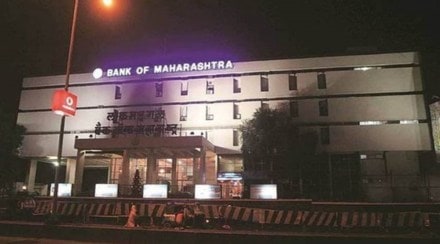Public sector lender Bank of Maharashtra on Monday reported a 117% on-year increase in net profit to Rs 452 crore for the first quarter of the current financial year, on account of lower provisioning. The bank made provisions of Rs 548 crore, 27% lower compared to the previous year.
The Pune-based bank also reported a near 9% increase in its pre-provisioning operating profit in Q1FY23, despite a decline in the non-interest income. The lender posted 54% on-year decline in other income to Rs 317 crore, mainly due to decline in treasury income on account of rising bond yields. The bank posted a loss of Rs 92 crore in the treasury operations in Q1FY23, as against a profit of Rs 300 crore in the same quarter last year.
The bank also posted an increase of nearly 20% in its net interest income to Rs 1,686 crore during the quarter, which aided margin growth. Net interest margin (NIM) expanded by 23 basis points (bps) to 3.28% as on June 30. The bank, which has the highest loan growth rate among public sector banks, saw its gross advances increase to 27% to Rs 1.41 trillion, led by retail, agriculture and MSME (RAM) segments. The RAM loans contribute to 58% of the total gross advances of the bank.
Within the retail segment, housing loans grew by 19.7% on year to Rs 21,807 crore. Housing loans consist of 60% of the total retail loans. The overall retail segment grew by 25%, followed by agriculture and MSME loans, which grew by 21.5% and 20.3%, respectively.
AS Rajeev, MD & CEO, Bank of Maharashtra, said despite a reduction of Rs 500 crore from non-interest income, the bank’s operating profit had grown by 10%, which meant that the core business of the bank had improved and there was also a considerable improvement in the asset quality. He remained very positive about the bank’s performance in the remaining quarters. The bank was looking at a 20-22% growth in credit for the full year, deposit growth of 12-14% and NIM in the 3-3.35% range.
Corporate loans, which stood at Rs 58,986 crore, grew by 33.7% on year. Of the total corporate loan book, the bank has 38% of total exposure to housing, agriculture and infrastructure sectors. The corporate loan segment growth came from mid-size corporates in the auto, pharma, hospital, ethanol and engineering segments. The bank’s sanction pipeline for mid-size corporates was at Rs 22,000 crore, Rajeev said. He did not expect to see any major impact on the rise in interest rates in the second and third quarters of the year.
BoM was also looking at expanding the gold loan book size to Rs 5,000 crore by September 2022 and to Rs 10,000 crore by end of the year. In line with the market demand, they were creating 60 gold points at their branches.
The bank’s gross non-performing assets (NPAs) as on June 30 declined by a massive 261 bps on year to 3.74% and also fell 20 bps sequentially.
Net NPAs were at 0.88%, which fell by 134 bps on year and marginally on a sequential basis. The ratio of special mention accounts (SMA)-1 to gross advances fell 0.24% in the June quarter from 0.98% in the previous year, while SMA-2 accounts to gross advances declined to 0.16% from 0.35% a year ago. The bank’s provision coverage ratio stood at 95.04% as on June 30.
BoM’s MD said a large part of the slippages of Rs 697 crore was because of a UP-based sugar mill’s account, to the tune of Rs 287 crore, and the bank had made 100% provision for this; otherwise, the slippage would have been within range. There was also a reduction in recovery during Q1FY23 to around Rs 550-600 crore, but they would cover up this gap in the coming quarters with a recovery target for the year at Rs 3,000 crore, he said.
During the quarter, the NPA account of SREI was declared as a fraud account. BoM had a Rs 612-crore exposure to this account but it was already provided for, so no fresh provisions were required. The bank was transferring three bad loan accounts to the tune of Rs 660 crore to the National Asset Reconstruction Company (NARCL) in the current quarter. SREI was not on this list.
Rajeev said the bank had got the board’s sanction to raise Rs 5,000 crore and they had already tied up Tier-II capital of Rs 1,000 crore and price discussions were going on. The bank could consider raising another Rs 1,000 crore in equity, as well as Tier 1, depending on the market situation in Q3 or Q4 of FY23. For the current year, the bank had no further capital requirement as it had Rs 1,200 crore in floating provisions for Covid, which could be written back at any time. The capital adequacy of 16.1% is very comfortable, and as and when it is required, they would be able to raise the capital, he said. The company has time till November 2022 to raise capital.
